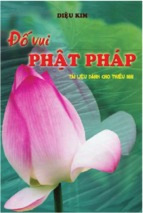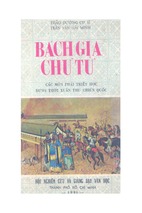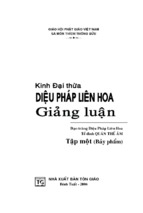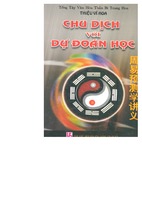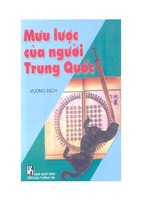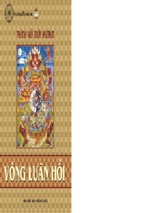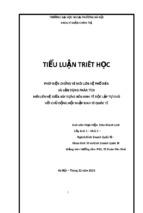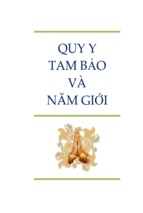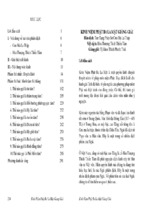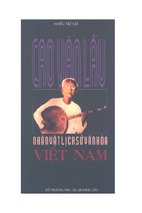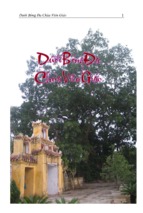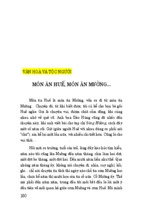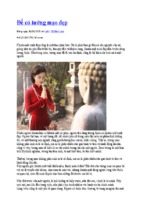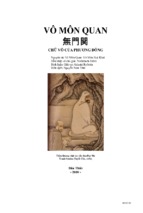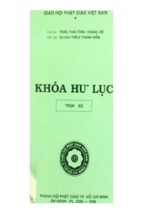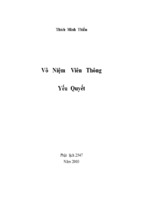Women
Living
Zen
This page intentionally left blank
Women
Living
Zen
JAPANESE
SOTO B U D D H I S T
NUNS
Paula Kane Robinson Arai
New York
Oxford
Oxford University Press
1999
Oxford University Press
Oxford New York
Athens Auckland Bangkok Bogota Buenos Aires Calcutta
Cape Town Chennai Dar es Salaam Delhi Florence Hong Kong Istanbul
Karachi Kuala Lumpur Madrid Melbourne Mexico City Mumbai
Nairobi Paris Sao Paulo Singapore Taipei Tokyo Toronto Warsaw
and associated companies in
Berlin Ibadan
Copyright © 1999 by Paula Kane Robinson Arai
Published by Oxford University Press, Inc.
198 Madison Avenue, New York, New York 10016
Oxford is a registered trademark of Oxford University Press
All rights reserved. No part of this publication may be reproduced,
stored in a retrieval system, or transmitted, in any form or by any means,
electronic, mechanical, photocopying, recording, or otherwise,
without the prior permission of Oxford University Press.
Library of Congress Cataloging-in-Publication Data
Arai, Paula Kane Robinson.
Women living Zen : Japanese Soto Buddhist nuns
Paula Kane Robinson Arai.
p. em.
ISBN 0-19-512393-X
1. Monastic and religious life for women—Japan. 2. Monastic and
religious life (Zen Buddhism) —Japan. 3. Religious life —Sotoshu.
4. Buddhist nuns—Japan. I. Title,
BQ9444.2.A73 1998
294.3'657-dc21
98-17675
1 3 5 7 9 8 6 4 2
Printed in the United States of America
on acid-free paper
For mv parents,
Masuko Arai Robinson
Lucian Ford Robinson
and my bodhisattva,
Kito Shunko
This page intentionally left blank
F O R E W O R D
Reflections on Women Encountering
Buddhism across Cultures and Time
Abbess Aoyama Shundo
Aichi Zen Monastery for Women in Nagoya, Japan
"We must all, male and female alike,
profoundly respect Buddhist teachings
and practice. We must not argue over
male or femaleness."
[excerpt from "Raihaitokuzui,"
Shobogenzo, by Zen Master Dogen]
"I chose the study of comparative religion, because I was born betwixt and
between a mother who is a Japanese Buddhist and a father who is an American
Christian. In time I was drawn to Buddhism, and in 1987 / sojourned to India
where I was able to visit the place where Sakyamuni attained enlightenment. It
was there that I met the Zen nun, Kito Shunko, who was at the Japanese Temple
in Bodh Gaya. I was deeply moved at having encountered a person who genuinely
lived according to the Buddhist teachings. At that time, the nun, Kito Sensei,
introduced to me the book written by the Abbess, On Becoming a Beautiful
Person. These experiences and events drove me to come to this Zen monastery for
women in Nagoya, Japan."
viii
Foreword
This was my first conversation with Paula. When she said, "I encountered a person
who genuinely lived according to the Buddhist teachings" a tear glistened in her
eye. It was a tear that came out of the joy of having had a profound encounter
with a wonderful person and teachings while on a journey in search of the truth.
At that time, I thought that she must have received the seeds of Buddhist
teachings from her mother when she was very young, and her Buddhist-seeking
antenna were raised from having experienced the complexities of being raised
between the two teachings of Buddhism and Christianity. Having met the nun,
Kito Shunko—who is like a living Buddha —she decided the direction of her
search. Since then Paula has come directly and deliberately along this path. These
are my thoughts about Paula's actions and commitments.
Buddhist history is about 2500 years long. Nuns' history is the same 2500 years.
The first people who began walking this path were the stepmother who raised
Sakyamuni, Mahaprajapati, and his wife, Yasodara. Along with the particularities
of cultural and historical influence, the Buddhist teachings have been transmitted
from India, China, and Japan. Even if there appeared discrimination between
monks and nuns, we today continue to receive the unwavering truth as expressed
by Zen Master Dogen's profound heart and mind: "We must all, male and female
alike, profoundly respect Buddhist teachings and practice. We must not argue over
male or femaleness."
The foundation of nuns' responsibility, conscience, and honor is to have been
granted the role to support the spiritual dimension of the efforts of women who
bear the responsibility—granted by the gods and Buddhas — to give birth to and
raise the people of tomorrow who will saddle the world on their shoulders. We
must exert ourselves unremittingly. This is the only path on which we must continuously advance.
In order to write this book, Paula experienced these nuns' path in a personally
embodied way; she studied our history, actual circumstances, and various other
dimensions. For Paula's posture of commitment and practice, I express respect
from my heart.
Gassho.
Acknowledgments
Giving thanks to people for having helped is one of life's true joys. It is my great
pleasure to thank all the people who have contributed to this book with their
expertise, time, insights, texts and documents, and hospitality—plus their thoughts
and hearts. It is my tremendous sadness, however, that I am unable to thank
personally a number of the key people whose efforts were vital to this book, for
they have passed on. One of the benefits of writing about nuns, however, is that
it has fostered a number of important relationships with truly remarkable people.
These relationships have helped sustain me through these losses. Most notably I
am grateful for the profound understanding of Kito Shunko, who is the inspiration
for this work.
I have come to know just how true the heeding of Wilfred Cantwell Smith,
my first-year Ph.D.-candidate advisor at Harvard University, was in stressing that
the study of religion is the study of religious people. He taught that you must
become genuine friends with various religious people. It is only then that you can
learn what is in their hearts and understand their religiosity.
Friendships, however, were fostered during my tenure in the monastery, not
out of a conscious methodological preference, but because we were engaged in
an intense shared experience. Silence being the norm in the monastery, unspoken
bonds of mutual respect were cultivated — especially during arduous periods of
fourteen-hour-a-day meditation. Having established these bonds of trust and respect, at times of crisis we turned to each other for help. Indeed, during a period
x
Acknowledgments
of personal crisis, unrelated to my research, I found sympathy in a number of my
female monastic friends. Not only did they help me through this crisis and
heighten my respect for them, but this encounter also became a catalyst for deeper
connections that gave me access to intimate information, insight into their private
feelings, and clearer understanding of their motivations. Although I do not use
this information in any explicit fashion, it enables me to understand the context
and import of formal responses given on surveys and in interviews. I am indebted
to all the nuns who opened their hearts to me. They are too numerous to mention
each by name, but my sincere gratitude extends to all. I would, however, like to
highlight a few.
If I had not met the nun Kito Shunko Sensei, I would not have written this
book. My profound gratitude goes to her, a living bodhisattva. She took care of
me while I was in the monastery. She had an uncanny knack of knowing even
before I did what I would need, whether it was a furoshiki to cover my books, a
robe for more formal ceremonies (that was wrinkle-free and dried quickly, even
in humid weather), or a reminder that there are many seasons, each with its own
valued quality.
Aoyama Shundo Roshi, the abbess of Aichi Senmon Nisodo, gave me her trust,
an indispensable gift. Without this, I would not have been able to live in the
monastery and interview the novices in training, and I would surely not have had
much of a response on the surveys. She gave me critical information, clarifying
insights, numerous books, free access to the monastery library, and necessary challenges.
I am grateful to the late Kojima Kendo Sensei for sharing that glorious
week together at Lumbini-en and giving me a visceral sense of the caliber of
women that changed Soto history, as well as more documentation of their history.
Special thanks are also due to a number of others. One is Yanaga Jissho, for a
depth of friendship that requires few words to communicate volumes. She gently
showed me how to survive in the monastery by her kind and insightful advice and
stellar example. Tomio Sensei brightened me up each time she appeared in the
monastery, and she arranged for me to stay in an apartment in her temple building,
located near the monastery. Kuriki Kakujo Sensei, my tea ceremony teacher who
let me continue taking lessons at her temple twice a week after I left the monastery.
She was always conscious of my research and freely gave information that she
knew would be helpful in furthering my understanding. There is also Okamoto
Sensei, for her care in teaching me how to sew a rakusu, my favorite class at the
monastery. Thanks also to the late Miyata Baijun Sensei for her healing laughter,
and to Tsuneda Sen'e Sensei for her gifts of time, texts, and the cherished plum
blossom incense burner that I have used to bring the smell of temples to my study
during the entire process of working on this book—in Nagoya, Tokyo, Cambridge,
Hong Kong, and Nashville. Nozawa Wako provided texts and informative conversations. All the nuns at Aichi Senmon Nisodo in Nagoya, whom I was cloistered
with in the fall of 1989, will remain in my heart for their patient understanding,
cooperation, and honesty. My thanks to the numerous nuns who responded to the
survey and who offered interviews.
Acknowledgments
I am deeply indebted to Ogishi Emiko and her late husband, Sakichi, for their
invaluable assistance in sharing their knowledge of Soto nuns' history and activities, for helping me gather materials and discussing the findings, and for driving
me around to important sites in the nuns' history. I am especially grateful for the
eleventh-hour assistance Mrs. Ogichi so freely gave.
Mrs. Kurokochi is due my thanks for an unforgettable night of hospitality at a
point in the field research phase when I was so extremely exhausted my teeth
hurt. She prepared a savory meal, a hot bath, and let me sleep in a warm soft bed
with a heater in the room. I felt like I had been blessed with a day in Pure Land.
My gratitude to the Skrzypczak family for their generous help.
I would also like to thank Koyanagi Reiko for her innumerable kindnesses.
Gratitude goes to the Nomura family for a place to stay when doing research in
Kyoto, and to Suzuki Atsuko for advice on matters of Sociology in a Japanese
context. Ihara Koji helped with scintillating discussion about Soto Zen.
I owe the Yanai family deep gratitude for their boundless generosity, engaging
and insightful conversations that have deepened my understanding of traditional
Japanese culture in Japan today, and for "adopting" me into their family.
Thanks are also due to Dai-en Bennage for invaluable discussions; Coen Murayama for practical advise in the monastery, Jiho Sargent for materials on Soto
regulations; and Kondo Tessho, abbess of Yoshimizu Gakuen, for books, information, and extensive discussions.
Throughout my years of study, I have been blessed with numerous teachers
who took the time to guide me and help me grow. Without each and every teacher
who cultivated and nourished me, I would not be where I am today.
Among the professors to be thanked, foremost is Masatoshi Nagatomi, my beloved mentor at Harvard University, who welcomed me into the world of Buddhist
Studies and who had faith in me. His keen insight and commitment to intellectual
inquiry have inspired me over the more than ten years under his tutelage. His
encyclopedic knowledge of the Buddhist world is daunting, but always a source
of illuminating guidance.
Other professors whom I would like to thank are: Miriam Levering for astute
questions, numerous discussions, information, and insights. Helen Hardacre for
her sound advice. Ines Talamantez for assistance with methodological considerations. Victor Sogen Hori for helpful discussions and comments. Mineshima Hideo
of Waseda University for foundational instruction and helping me make connections with other people. President Koide of Aichi Gakuin University deserves special mention for his assistance. Okajima Hidetaka, also of Aichi Gakuin University,
for assistance in understanding arcane aspects of Soto sect regulations. The late
Ishikawa Rikizan of Komazawa University for information about nuns in early
Soto Zen history. Paul Swanson and Jim Heisig of Nanzan University Institute for
Religion & Culture for their reflections and assistance. My professors at Kalamazoo College who introduced me to the significance of the study of religion.
Conversations with colleagues at Vanderbilt University, especially Daniel Patte,
have helped me refine the book. I also thank Beth Conklin for her indispensable
insights, editorial comments, and penetrating questions that helped deepen my
thoughts. Her assistance significantly improved the book.
xi
xii
Acknowledgments
The field work required for this project would not have been possible without
the financial support given by a Fulbright Dissertation Grant, a Reischauer Institute at Harvard University Summer Research Grant, and the YKK Corporation.
Special appreciation is due to Miranda Shaw for scholarly advice and inspiring
discussions, Lisa Hallstrom for careful reading of early drafts and invaluable comments, John Holt for careful reading of parts of the manuscript, helpful encouragement and instrumental advice, and Tara Doyle for helping me get to India in
the first place.
I would like to duly acknowledge and express my gratitude to the people of
Oxford University Press for their support and careful work, especially Cynthia Read
and Lisa Stallings.
My thanks also goes out to Lucy for helpful discussions, and to Wendy for
sisterly support.
I am deeply grateful to Chih Wang, my supportive husband, who enthusiastically did whatever he could to enable and empower me to complete this book.
My deepest gratitude goes to my parents, who through their example instilled
in me a profound sense of wonder in the rich cultural and religious diversity of
our world. My father gets special appreciation for setting me on the path to find
the contributions that can be made to humanity through engaged scholarship. His
generous assistance in the late stages of preparing the manuscript is also deeply
appreciated.
Although my mother will not see this work in its published form, her incomparable generosity and dedicated assistance helped me all along the way. She came
to live with me in Nagoya for several months after I left the monastery. Because
she was from the same generation as most of the nuns I was interviewing, even
when she was not attending the actual interview, it was clear that her presence in
my life was a bridge which facilitated deeper conversations that I could never have
had on my own. She also addressed the envelopes for the surveys and helped
decipher the elegant (but sometimes illegible, to my eyes) writing on the responses.
There are more ways in which she freely gave her assistance than I can recount
here. But I must mention one of her last gifts to me. It was a gift that also
poignantly showed me how to mother a child with unconditional love. She cared
for my newborn son, Kenji, while I finished this manuscript. (He was born five
weeks early, so I did not meet my personal deadline to finish before his birth.)
For several weeks she would send me off to work for long days, expressing concern
that I be careful not to push too hard. I now realize that those weeks when I had
spent long days away working had not been easy for her, but she never gave any
indication. Just a month after the manuscript was submitted, we learned her body
was completely wracked with cancer. All I can say is that my profound gratitude
for her love moves me to tears.
Gassho.
Nagoya, Japan
August 1998
P.K.R.A.
Contents
Acknowledgments
ix
Transliteration Guide
Prologue
ONE
TWO
THREE
xv
xvii
Introduction 3
Scholarly Contexts 4
Theoretical Considerations 20
Methodological Considerations 25
Historical Background 31
Pioneering Monastics 31
Dogen and Women 36
Tokugawa Encroachments
Meiji Reclamations 45
44
Twentieth-Century Leadership 49
First Generation: Rapid Ascent through Education 52
Second Generation: Strategists of Egalitarianism 63
Third Generation: Zen Master of a New Tradition 74
xiv
Contents
FOUR
The Monastic Practices of Zen Nuns 8 2
Nuns' Vision of Monastic Life 82
Daily Life in a Monastery of Zen Nuns 86
Divisions within the Monastery 98
Ceremonial Rituals and Activities 102
Educational Curriculum and Degrees 109
The Aesthetics of Discipline 114
FIVE
Motivations, Commitments, and Self-Perceptions 121
Changing Life Patterns of Twentieth-Century Zen Nuns 125
Buddhist Practice: Meaning and Action 137
Nuns' Views on Monastic Life 148
SIX
Conclusion: Innovators for the Sake of Tradition 155
Preservers and Creators of Buddhist Tradition 159
Bearers and Transmitters of Traditional Japanese Culture 161
Endnotes
165
Appendix A. Questionnaire
195
Appendix B. Glossary of Japanese Terms
Bibliography
Index
213
227
Photographs follow page 146
201
Transliteration Guide
Japanese names appear following Japanese custom, family name first, given name
second.
In transliteration of Japanese words and names, the Hepburn System is used,
except in familiar names like Tokyo. The Hepburn System follows the common
English reading, using diacritics to mark long vowels.
Because this work focuses on the Japanese Buddhist tradition, Japanese is considered the primary language for Buddhist terms. The equivalent Chinese and
Sanskrit are sometimes provided for clarification.
For Chinese words, the pinyin system for transcription is employed. Sanskrit
words are transliterated according to Whitney, Sanskrit Grammar. References in
Pali are limited to citations quoted that use Pali.
Non-English terms are given in italics, except for words that are frequently used
and are basic to the book, for example, words like Nigakurin and Nisodo, which
are explained in the text. In addition, place names do not appear in italics.
Abbreviations: ]., Japanese; Ch., Chinese; Skt, Sanskrit.
xv
This page intentionally left blank
Prologue
Let me begin with three episodes that were formative and vital in creating this
book. They provide keys to my motivation and illustrate the sometimes serendipitous nature of scholarly pursuits. The first episode explains my early impressions
of Buddhism in contemporary Japan. The second reveals my initial impulse to
move in the direction of exploring the topic of Buddhist nuns. The third episode
shows how the research proceeded.
When I was living in Japan in 1980, I was just beginning my formal study of
Buddhism at Waseda University. I learned introductory material about major Buddhist leaders in Japanese history and basic Buddhist concepts, including that compassion was a fundamental value in the Buddhist teachings. Therefore, 1 was rather
bewildered when I heard the wife of a priest say, "Our son wants a stereo, I wonder
if there are any funerals around?" At the time, I had no idea what the connection
might be between stereos and funerals. Finally, a friend explained it to me. Funerals are a temple's major source of income; indeed, funerals make many priests
rather wealthy. This incident, as well as casual observances of life in modern
Japan, led me to an impression that there was no genuine Buddhism left in Japan.
I was disillusioned. I thought that the affluent economic impulse had ruined any
vestige of the tremendous history and teachings I had been studying. My cynical,
naive, and uninformed conclusion about the state of Buddhism in modern Japan
shifted when I met a Japanese Zen Buddhist nun.
xvii
xviii
Prologue
I met Kito Shunko in the autumn of 1987 when I sojourned to India as a
scholar of Buddhism. She is an elderly Soto Zen monastic woman who was returning to India for a final pilgrimage to the Mahabodhi Temple in Bodh Gaya.
Although I had concentrated my Buddhist studies on Japan, I was not aware of
an extant order of Japanese Zen nuns. My first glimpse of her with clean-shaven
head and saffron robes — the traditional color of Indian monastics — was compelling. Moving toward her I realized her robes were Japanese in design, but not the
black that is common to monastics of Japan. Her aesthetic sensitivity and cultural
awareness drew me to her side. In the softened light of evening as we walked
around the Bodhi Tree her face glowed with the wisdom of enlightenment. Compassion emanated from her every motion as we moved through wispy clouds of
incense carrying the prayers of devotees. Among the spirited pilgrims and the
desperate beggars her laughter resounded with the peace of one who has soared
the heights and fathomed the depths. She seemed to be a living model of all that
I had been studying—embodying harmony in its richest form. What teachings
have helped her gain such wisdom? How did she train to be so compassionate?
Where is the spring of her ebullient laughter?
I knew after our first conversation under the Bodhi Tree that I wanted to learn
as much as possible about her way of life. As we walked along the Niranja river
where Sakyamuni once walked, a brilliantly pink sun rose into the sky. She interwove stories of the years she spent in India building the Japanese Temple in Bodh
Gaya with poetry by Zen master Dogen (13th c.) and information about a training
temple for monastic women in Nagoya, Japan. We laughed heartily as the image
of meeting again in that monastery for women — worlds away—flashed through
our minds.
I had found a living treasure of Japanese Buddhism.
(Numerous people, including abbess Aoyama, mentioned that if I had not met
this particular nun, Kito Shunko, I probably would not have been moved enough
to come live with and study Zen nuns. A laywoman very close to many of the
higher ranking nuns, Ogishi Emiko, recounted to me the story of her first meeting
with Kito Sensei. It illustrates how Kito Sensei is respected among the nuns themselves. Ogishi-san was visiting Kato Sensei at Seikanji Temple when Kito Sensei
came in and sat at her teacher's (Kato Sensei) feet and began stroking her hand.
Kato Sensei looked at Ogishi-san and said, "There are many kinds of nuns. But
this nun, Shunko-san, is a nun's nun.")
Another event that propelled this book along occurred a few years later, after I
had spent one year living with and near the Zen nuns' community. It involved
my interaction with one of my important living sources, a nun named Kojima
Kendo (1898-1995). In the summer of 1990, I went to visit her in Toyama Prefecture where she was passing her final years at the Lumbini-en orphanage she had
helped to establish. I knew I would not be able to conduct a typical interview
with this nun, who had taken on the entire Soto sect administration to win equal
rights for nuns. I just wanted darsan: to see and be in the presence of a holy
being. In lucid moments, she provided details of various poignant moments in
her life: what it was like being among the first nuns to study at Komazawa Uni-
Prologue
versity, how she laughed when she realized that she was the only nun among a
roomful of top-ranking monks as she pounded her fist on the table demanding
reforms in sect regulations, and the time she served as the lead celebrant in a
religious ceremony at the temple Dogen founded, Eihei-ji —first nun in recorded
history to do so—and how Niwa Zenji, the highest Zen Master in Japan, teased
her about how masculine she was and she teased him about how feminine he
was. She also gave me numerous original texts that shed light on the inside story
of Zen nuns' activities that I would never have known about otherwise.
We were inseparable for the entire week, holding hands walking down the
corridor to the dining hall, napping on the floor in the heat of midday, snickering
in the bath, and giggling past lights out as we lay in our twin futons. As I was
packing my suitcase, she scooted her tiny frame — a shadow of her past form —
across the floor, and she offered me a cookie that she had already started nibbling
on. She announced, "These are from Shunko-san." Then she impishly smiled as
she finally remembered that the cookies in the pretty lavender tin that we had
been snacking on all week were the ones I had delivered to her from Kito Shunko.
Sadness weighed heavy in the air as we knew the hour of my departure had arrived.
Although it had been only a few days, it was as though we had been friends forever,
an unlikely pair—me, a graduate student fighting for a little self-confidence, she,
a famous Zen nun who fought an entire male-dominated institution and won. I
gathered my courage, because I could not return to Cambridge without asking
her, "Kojima Sensei, what do you think of me writing my dissertation on the
history and activities of twentieth century Soto Zen nuns? Is it okay?" Nothing
that had transpired in the last days had prepared me for her response. Her tiny
curved back shot up— restoring the full extension of her former stature. She
squared her shoulders and bowed deeply, placing her brow upon the floor for a
two-minute eternity. As she began to raise her body, she spoke in the most eloquent and humble form of Japanese, "Please, I beseech you to complete this
project. I have not died so that I could meet you." I sat in stunned silence as she
dropped her shoulders, back rounded, head cocked to the side, and flippantly
added, "I'm counting on you!"
xix
- Xem thêm -

